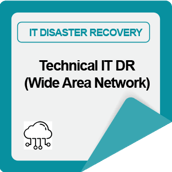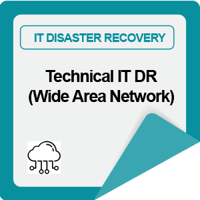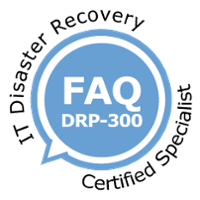 Instruction to BL-DR-5 Participants: This is a series of pre-reading material for the discussion in the coming online workshop.
Instruction to BL-DR-5 Participants: This is a series of pre-reading material for the discussion in the coming online workshop.
Wide Area Network (WAN)
Wide Area Network (WAN) is defined as a data network which interconnects two or more LANs across different geographical locations that can be within the boundary of a country or across different countries. In addition, a WAN can also be connected to another WAN for information communication needs.
Major Telecommunication Technologies
The major telecommunication technologies that are used to interconnect the WAN between LANs or WANs can be classified as follows:

Dial-up
Dial-up connection leverage on the existing analog telephone network infrastructure through the usage of modems. The dial-up connection can achieve a maximum of 56 kbps of data communication theoretically. As such, dial-up is only suitable for minimal data transfer over a non-permanent connection.
Integrated Services Digital Network (ISDN)
Integrated services digital network (ISDN) is an international communications standard for sending voice, video, and data over digital or standard telephone wires. The data transfer rates for an ISDN connection can be in the form of channels of 64 kps. It typically comes in two channels or 30 channels of 64 kbps.
Digital Subscriber Line (DSL)
Digital Subscriber Line (DSL) is a technology that dramatically increases the digital capacity of ordinary telephone lines into the home or office. And unlike ISDN, which is also digital but travels through the switched telephone network, DSL provides "always-on" operation.
Leased Lines
A leased line is a dedicated phone connection supporting a fixed data rates between two LANs located two different geographical locations. Some of the typical leased lines are:
- The t-1 line consists of 24 individual 64 kbps channels, and each channel can be configured to carry voice or data signals. Fractional T-1 access also can be provided when multiples of 64 kbps lines are required
- E-1 line that supports 2 Mbps of data transfers speed
- A T-3 line consists of 672 individual channels, each of which supports 64 Kbps. T-3 is also referred to as DS3
ATM
ATM is a network technology that transfers data at high speeds using packets of fixed size. Implementations of ATM support data transfer rates from 25 to 622 Mbps and provides guaranteed throughput.
Frame Relay
Frame relay is a packet-switching protocol for connecting devices on a WAN. In frame relay, data is routed over virtual circuits. Frame relay networks support data transfer rates at T-1 and T-3 speeds.
Synchronous Optical Network (SONET)
Synchronous Optical Network (SONET) is the standard for synchronous data transmission on optical media. SONET supports gigabit transmission rates.
Wireless
A wireless LAN bridge can connect multiple LANs to form a WAN. Wireless supports distances of 20 to 30 miles with a direct line of sight.
VPN
A VPN is an encrypted channel between nodes on the Internet over the public networks.
Technical DR Considerations
The core DR consideration for recovering the WAN setup during any disruptions is the speed of restoring the WAN services in the shortest possible time, so as to support the quick recovery of the business applications to satisfy the organizational RTO and RPO requirements.
In order to support this core consideration, we must equip the recovery personnel with the correct information, technical skill-sets, complete recovery procedures, and tools, so as to enhance their ability in speeding up the recovery process. Some of the good DR practices that you may want to consider for enhancing the comprehensiveness of the WAN recovery process are listed in the following subsections.
Technical Documentation
Precise and up-to-date WAN architecture diagram with the following details:
- Brand, model, serial number and firmware version of all network connection devices that are needed to setup the WAN
- IP addresses that are assigned to each and every of the network devices
- Configurations of each and every of the network devices and where are the backup copies of the configuration data are stored
- Type of communication links used, vendors who provide the links and the geographical locations where these links are connected to
- Contact information for all the vendors
- Contract documents or agreements with all the vendors
- SLA expectations for carrying equipment replacement, a swing of links to backup sites, switch over to backup links, redirect telecommunication services to alternate service providers, etc.
- Alignment with Organisation’s Network Security and System Access Security Policy
Coordinating the WAN DR solutions with the organization’s network security and system access policies will enable you to protect your WANs against potential threats such as virus infections, and DDOS, that will affect your network availability.
- Alignment of Criticality of WAN Services with Data and Applications
WAN DR strategies are influenced by the type of data routed on the network. A WAN that hosts a mission-critical distributed system will require more robust recovery strategy than a WAN that connects multiple LANs for simple resource sharing purposes
DR Solutions
The basis of WAN DR solutions include all the measures discussed for PCs, servers, websites and LANs that we have discussed in the previous Appendices. In this chapter, we will add-on with additional recovery solutions that addresses the area of communications links that connect the disparate LANs.
Redundancy of Communications Links
Redundant communications links usually are necessary when the network processes critical data. The redundant links could be the same type, such as two T-1 connections, or the backup link could provide reduced bandwidth to accommodate only critical transmissions in a DR situation.
For example, an ISDN line could be used as a DR communications link for a primary T-1 connection. If redundant links are used, the Organization DR Coordinator should ensure that the links have physical separation and do not follow the same path; otherwise, a single incident, such as a cable cut, could disrupt both links and render this strategy useless.
Redundancy of Network Connecting Devices
The duplicating network is connecting devices, such as routers, switches, and firewalls, can improve network availability of the LAN interfacing points by removing the risk of single points of failure at the LAN interfaces. At the same time, this solution will also improve the WAN’s speed of communication through using load balancing techniques over the main and backup network devices.
Redundancy of Network Service Providers
If 100 percent data availability is required, redundant communications links can be provided through multiple Network Service Providers (NSPs). In order to provide further redundancy, independent Internet connections may be established from two geographically separated LANs, so that when one connection fails, Internet traffic could be routed through the remaining connection.
If this solution is chosen, the Organization DR Coordinator should:
- Ensure the NSPs do not share common facilities at any point, including building entries or demarcations
- Consult with the selected NSP or Internet Service Provider (ISP) to assess the robustness and reliability within their core networks (e.g., redundant network connecting devices and power protection)
However, this strategy highlights the balance that must be maintained for security and availability. Multiple Internet connections increase a network’s vulnerability to hackers.
Tighten Service Level Agreements with Network Service Providers
SLAs can facilitate prompt recovery following software or hardware problems associated with the network. An SLA also may be developed with the NSP or ISP to guarantee the desired network availability and establish tariffs if the vendor’s network is unavailable. If the NSP or ISP is contracted to provide network-connecting devices, such as routers, the availability of these devices should be included in the SLA.

Reference
Goh, M. H. (2016). A Manager's Guide to Implementing Your IT Disaster Recovery Plan. Business Continuity Management Specialist Series (2nd ed.). Singapore: GMH Pte Ltd.
Extracted from "Appendix D - Technical IT DR Considerations - Wide Area Networks"
More Information About IT DR Blended Learning
To know more about our blended learning program and when the next course is scheduled, feel free to contact our friendly course consultant colleagues via sales.ap@bcm-institute.org. They are the BL-DR-3 Blended Learning DR-300 IT Disaster Recovery Implementer and the BL-DR-5 Blended Learning DR-5000 IT Disaster Recovery Expert Implementer.
 |
 |
 |
 |
 |
 |
Please feel free to send us a note if you have any of these questions to sales.ap@bcm-institute.org |
![FAQ [BL-DR] [5] DRP-5000](https://no-cache.hubspot.com/cta/default/3893111/e1e30273-3d46-4a5b-9f9d-11d9457a377a.png) |




